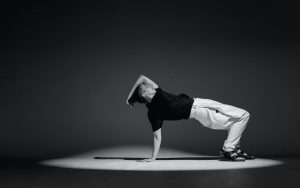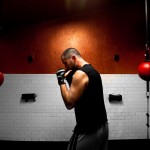Swimming and the queer body
By: Danielle Scrimshaw

Over summer, my girlfriend and I visited St Kilda Sea Baths for the first time, driving for 50 minutes to swim at this historic spot.
My interest in the public baths was dependent on two things: the novelty of swimming in an indoor saltwater pool, and the location’s connection with a woman I’d been researching named Harriet Elphinstone-Dick.
At the time, I was in the middle of proofreading my book about the history of queer women in Australia, in which Harriet features.
Image by: Jernej Graj
Harriet is a familiar name to those like me who have scoured the available history of queer people in Australia. She was an Englishwoman who immigrated to Melbourne in 1875 with her friend/suspected romantic partner Alice Moon.
Both women were in their early twenties; the reason for their move to the other side of the world isn’t known.
In England, Harriet had gained local fame for her swimming feats, winning public competitions and completing a swim from Shoreham to Brighton in just under three hours. Upon arrival in Melbourne, she continued this passion by competing in races against men and teaching swimming classes at St Kilda Baths to women and girls.
In 1876, Harriet swum against a Mr McGonigal at the baths. When she won, McGonigal demanded a rematch, to which Harriet heartily agreed.
As researcher Wayne Salt has written, “[Harriet] loved swimming and loved beating men.” The pair returned a month later to see who could swim the furthest beyond two miles; Mr McGonigal was assisted out of the water, while Harriet was presented a silver cup as reward. There was no need for a second rematch.
I am not a competitive swimmer, nor am I very fast. At the pool, my girlfriend and I go to the designated slow lane and swim a relaxed backstroke or freestyle.
Growing up near a beach, I’ve always loved being encompassed by water. It feels safe, even if there is a risk of drowning, or being overtaken by a disgruntled man at the pool.
I can’t pinpoint why I have this sense of safety, and I’m not so naïve to overlook the dangers of swimming, but I feel connected to the water through my heritage, home and queerness.
Harriet and Alice opened Melbourne’s first women’s-only gymnasium together in 1879, originally located in the Queen Victoria building on Swanston Street.
Many women joined to learn about physical fitness and strengthen their bodies – newspaper articles reported that the women who attended could be “recognised anywhere by their splendid figures, fine carriage, and graceful movements”.
Graceful movements and a fine carriage were not the sole aim of this gym, however. Harriet and Alice, queer icons, wanted women to be strong, self-assured and capable of taking care of themselves.
Swimming is one of the ways I feel strong and self-assured in my body.
I remember jumping off a boat once in New Zealand, dropping into the depths of Lake Taupo. It was night and the water was dark. I was slightly worried that I would drift away from the boat if I wasn’t careful.
People use coming out of a closet as a euphemism for telling people you’re queer, but my experience felt more like breaking the surface of Lake Taupo – gasping for air, flooded with sheer relief.
Another moment in the water leads me to connect queerness with swimming. At night again, I slipped into the freezing Newcastle Ocean Baths during the National Young Writers Festival weekend.
After exclaiming about the chill of the water, my body acclimatised. I settled on my back, looking up at the black sky, and listening to the water in my ears. Eventually, I noticed my friend dog-paddling up to me and I repositioned myself to face her.
“I lost you,” she said.
“I told you I’d be over here.”
“Yeah, but then you didn’t come back!”
It might have been that moment in the water, the sudden warmth that filled my chest, or it might have been after, but by the end of that weekend I knew I had feelings for her. I knew I couldn’t continue believing I was straight.
Water plays a thematic purpose in lesbian period films Portrait of a Lady on Fire and Ammonite, and in the queer novels Barracuda by Christos Tsiolkas and Laura McPhee-Browne’s Cherry Beach.
I can vividly picture a film being made about Harriet Elphinstone-Dick’s life and her relationship with Alice Moon, with the backdrop of St Kilda Sea Baths as Harriet dives, again and again, into the pool and Port Phillip Bay.
Writing on thematic imagery in queer cinema, writer Meg Shields describes water as “a liminal space where bodies are free to exist as they are […] and where diving into the unknown requires courage, strength, and confidence.”
My least favourite part of swimming in public is the walk to the water from the changeroom or your spot on the beach.
That short period of time when my body – its hair in the ‘wrong’ places, the tattoo of a naked woman on my thigh (shout-out to non-binary illustrator Frances Cannon for this one), the roundness of my stomach – is exposed to the people around me was almost enough of a deterrent to keep me away from the pool. Almost.
Of course, swimming as a sport can be restrictive for queer and trans people, too. The vulnerability of exposing your body in the changeroom and pool – not just the vulnerability, but the politics of it all.
Most public swimming pools only have male and female changerooms, which can restrict trans and non-binary people. More than that, trans people are actively excluded from competitive sports and have been banned from women’s-only baths, such as the case of the McIvor’s Ladies Baths in 2021.
While the institution surrounding the sport may have its issues, the act of swimming itself – of simply being in a body of water – can be freeing, terrifying and exhilarating.
After our visit to the St Kilda Sea Baths, my girlfriend and I find ourselves in Cheltenham one day and I lead her into the old cemetery next to the train station. Harriet is buried here, and after some searching, we find her small, humble gravestone.
She died in August 1902, in the late winter. Her death certificate cites heart disease as the cause of death. But maybe, like a shark, she stopped swimming and simply ceased to exist.
Her relationship with Alice and the business they created together were radical for the time, leading me to wonder if I could have been so innovative, so bold, in the Victorian age.
Mostly, I am grateful I don’t need to think of this. I can walk to the pool’s edge and hold my girlfriend’s hand. If people disapprove, we are unaware. We step into the water and drop into its depths, coming up seconds later for air.
Danielle Scrimshaw is a writer living on Boonwurrung country. Her first book, She and Her Pretty Friend (Ultimo Press), is a history of queer women in Australia. Come say hi @dani_delivers.












